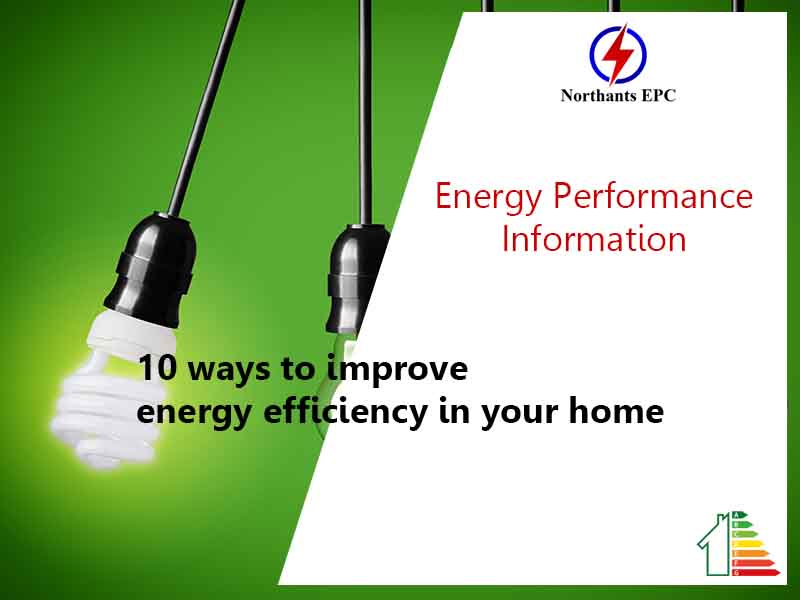10 ways to improve energy efficiency in your home
1 Change your light bulbs
Upgrading to LED lightbulbs can lead to major energy savings over time. While the upfront cost of LED bulbs is higher, with prices ranging from $10-$30 per bulb, the long-term savings are significant. LED bulbs use up to 80% less energy than traditional incandescent bulbs and last around 10 times longer, up to 10,000 hours. This means you’ll save on replacement bulb costs in addition to lower electricity bills. Over the 10,000 hour lifetime, an LED bulb can save over $100 in energy costs compared to an incandescent. They also produce less heat, so your AC system doesn’t have to work as hard in the summer. Consider doing a full sweep, replacing all compatible light fixtures with Energy Star certified LED bulbs to maximize savings.
2 Cavity wall insulation
Injection cavity wall insulation involves filling the space inside your exterior walls with insulating material. This creates a robust barrier to keep warm air inside during winter and prevent overheating in summer. On average, cavity wall insulation provides energy savings of up to 20% per year and pays for itself in under 5 years through lower heating and cooling bills. There are often local and federal rebates available that allow homeowners to get discounted or even free insulation installation. Be sure to find and take advantage of any rebates available to maximize savings.
3 Invest in energy efficient appliances
When old appliances like refrigerators, dishwashers and washing machines need to be replaced, choose new Energy Star certified models. While energy efficient appliances often cost more upfront, they can provide significant lifetime savings through lower energy bills. Features like improved insulation in fridges, energy saver modes for dishwashers and heat pump drying in dryers reduce appliance energy consumption by 20-50%. Over a 10-15 year lifespan, just one upgraded appliance can save over $400 in utility costs.
4 Upgrade your windows and doors
Single pane windows provide next to no insulation, resulting in major heat transfer and energy loss. Upgrading from single pane to double or triple pane windows creates an insulating air gap that reduces home heat loss by 25-50%. High efficiency windows also block UV rays to keep your home cooler. Similarly, replacing drafty doors with insulated models can reduce air leakage. And in some climates, strategic window tinting in summer helps reduce AC costs. Homeowners can expect to save 10-25% on annual energy bills from window and door upgrades.
5 Seal up draughty holes
Small cracks and gaps in a home’s interior can draw in outside air, creating uncomfortable draughts and driving up heating costs. Methodically sealing all cracks with caulk and spray foam reduces air leaks and improves insulation. Common problem spots include openings where plumbing, wiring or vents penetrate walls, ceilings and floors, cracks around moldings and window frames and where walls meet ceilings and floors. Proper sealing can improve home air tightness by up to 20%, providing energy savings of 10-20% or more per year.
6 Insulate your hot water tank
A hot water tank insulation wrap costs around $20 and pays for itself within 12 months through energy savings. The insulation creates a protective barrier that prevents heat loss and can reduce standby losses by 25-45%, saving 4-9% on water heating costs annually. DIY kits are simple to install without draining or turning off the water heater. Or hire an expert for around $150 to completely replace old tank insulation. Either solution will start reducing energy bills quickly.
7 Shade your windows
Well-positioned shade trees, exterior shutters, awnings and indoor shades/curtains help reduce air conditioning costs in summer. Shading windows on the south and west-facing sides blocks intense afternoon sun from entering and heating your home’s interior. Homes with shaded windows can maintain cooler indoor temps and use 10-25% less air conditioning energy. In winter, opening south facing window shades lets beneficial solar heat in to warm your home naturally and lower heating bills.
8 Loft insulation
A home’s attic and roof are prime spots for heat loss in winter and heat penetration in summer. Adding adequate insulation helps regulate indoor temperatures year-round. Most older homes have attic insulation levels below the current recommended standards. Topping up to the optimal insulation level based on your climate provides better efficiency. Sealing any attic air leaks before adding insulation also maximizes the benefit. Proper attic insulation improvements can reduce home energy costs by up to 20% annually.
9 Upgrade your boiler and heating system
Swapping an aging gas boiler for a new Energy Star rated high-efficiency condensing boiler can cut heating costs by up to 30%. Combined with programmable thermostats and upgraded heat distribution systems like radiant floor heating, you can achieve even more savings. Heating and cooling accounts for over half of home energy expenses on average. So upgrading out-of-date heating equipment provides big benefits. Be sure your HVAC contractor properly sizes new components to maximize efficiency.
10 Consider greener energy sources
To drastically reduce your environmental impact, consider adding renewable energy sources like solar photovoltaic panels or geothermal heat pumps. Local, state and federal financial incentives can offset upfront costs. Once installed, these systems provide free energy for decades while increasing your home’s value. Adding green features like solar, geothermal or ENERGY STAR rated windows and appliances can also make your home eligible for eco-friendly mortgage options like Energy Efficient Mortgages and home equity products for green improvements.
